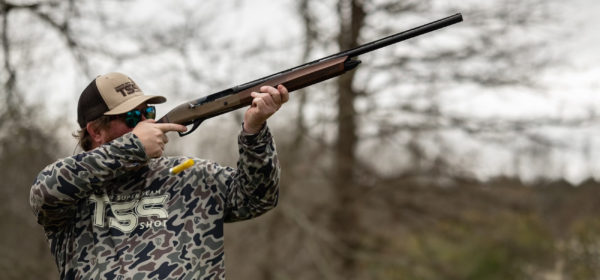Southern Dove Season Kicks Off Fall Hunting
Category: article
Sep 7th, 2022 by Keith Worrall
Modified Sep 7th, 2022 at 12:53 PM
Southern Dove Season Kicks Off Fall Hunting
Tips for a Successful Dove Hunt
By: Dena Vick
As the calendar flips to September, a lot of things come to mind. The start of school, football, and the traditional Labor Day kick-off of dove season. In most states, dove are hunted in much the same way—sitting on buckets or truck tailgates in fields of wheat, soybeans, exposed peanuts, and sunflowers with a shotgun in hand.
In the South, the dove hunt is as much a social gathering as it is a bird hunt. Family traditions surround the event. BBQ’s, parties, and reunions take place around the time-honored practice.
The best way to guarantee a successful hunt is to be prepared with the right gear. Recently, while planning an upcoming Labor Day hunt, I visited with my friend Blake Rice, president of TSS Shot, to plan out what we’d need for the weekend. We realized that in preparation for choosing the proper gear, you need to consider weather conditions and your hunting buddies — including man’s best friend.
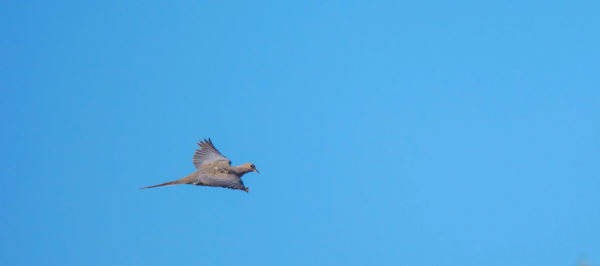
Dove season starts out warm in most of the country but is downright hot in the south. Sitting or walking in open fields in late afternoon exposes hunters and dogs to direct heat ,so prepare accordingly for you and your dog. It’s important for hunters and their dogs to stay hydrated. Take plenty of water. Rice takes a small cooler and allows his black British lab, Rosco, to drink cold water out of his Grizzly Cooler to keep him hydrated. “I use the 15 for in the field and keep the 60 in the truck full of water and ice for back up,” said Rice. Don’t overhunt or push your dog. Let them rest. Some hunters bring collapsible canine blinds to provide shade for their dogs during the hunt.
Dove hunts typically start between 2:00 pm and 3:00 pm and last until sunset. If you participate in pre-hunt festivities, try not to overeat prior to the dove hunt as you will be in the heat all afternoon. A typical overeater of delicious Georgia BBQ, Rice prefers to wear Nomad’s camo turkey series because it is lightweight and breathable. However, any light-colored camo or tan clothing will suffice because there is nothing worse than heavy, restrictive clothing when you have a case of the meat sweats.
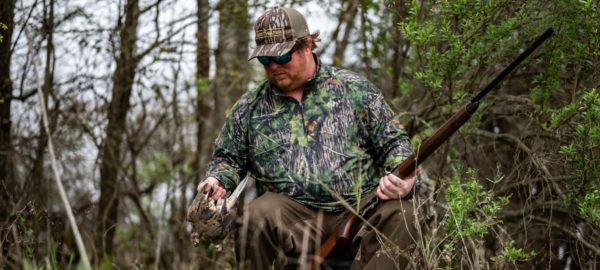
He adds a Boyt shell belt to his ensemble to keep shells at his hip. This keeps his shells easily accessible and makes reloading quicker.
Rice always wears lightweight, breathable LaCrosse snake boots as a precaution during these warm weather hunts, because he’s likely to encounter a snake or two in the field. “While walking through the field, I always keep a look out for arrowheads and rattlesnakes—either one is a big surprise,” smiled Rice.
Eye protection is a must. “I like Redfin polarized decoy lens in the Sanibel frames. The ballistic non glare lenses are important as the birds don’t spot you from the flash of the lenses,” said Rice
A lot of hunters will sit on the tailgate of their truck, but he prefers sitting in the field away from the reflections of chrome and glass and the temptation to slam doors. Any stool will work but he prefers an Evans Sports bucket with a padded seat on it because you can store gear in the bucket while you are in the field.
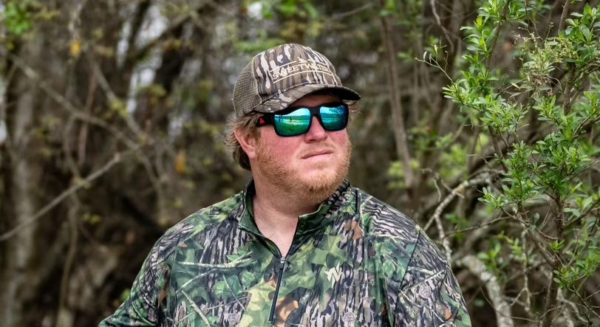
You’ll need a good 12 or 20-gauge shotgun and shells. I always carry a 20-gauge because I have a small stature and I am more comfortable shooting a 20-gauge shotgun. Rice chooses his gun depending on the scenario. I was curious as to how he determines which firearm is best and asked him to explain.
“If I’m shooting in a tighter environment when the birds are low, I tend to carry a 20. But, in late season, birds often tend to fly pretty high. That’s when I’ll almost always carry my 12 gauge. I shoot a Retay Masai Mara because it delivers more consistent patterns. ReTay is the only gun manufacturer to pre-drill their barrels in the factory which lengthens the forcing cone giving a more reliable pattern.”
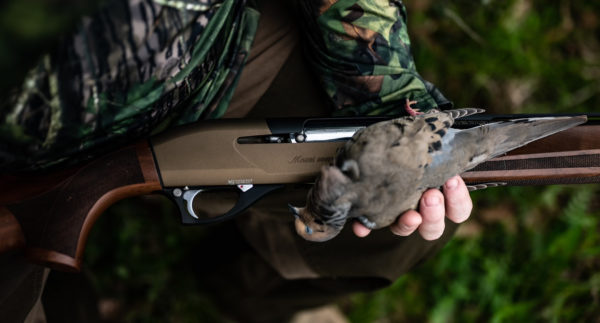
Rice has been testing TSS shot load in a 9 and 10 shot with 3/4 oz and 28 grains of powder because tungsten is a non-toxic alternative to lead. National parks no longer allow lead on Federal lands. TSS is trying to get ahead of the curve and produce an affordable dove and quail load for the future. Tungsten does come with a higher price and in states where lead is permitted, Rice recommends using 7.5 shot in 1 ¼ quarter load. These are available at most sporting goods stores.
Always check your local state regulations and follow laws of that state.
Cleaning the Dove:
When field dressing dove, I use Smith’s Edgesport Bait and Game Shears to pop the breastbone out and cut the wing bones. I then separate the breast cavity from the remainder of the body leaving a nice piece of dove meat. Whether you field dress your harvest or transport them home to clean, place the birds in a cooler to cool the meat down.
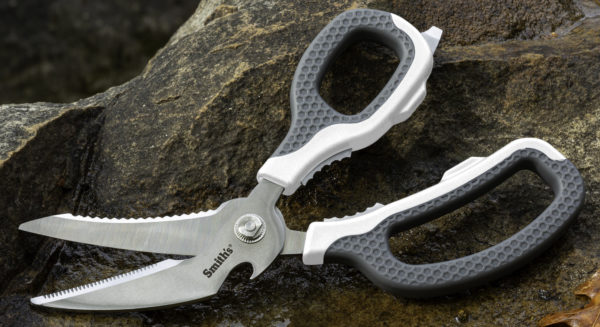
One way I like to prepare dove is to soak them in soy or teriyaki sauce for 20 minutes to an hour, wrap the meat and a slice of fresh jalapeno in bacon, securing it with a toothpick, and place on the grill until done.
These dove treats will be a hit and are the perfect way to top off the day!

